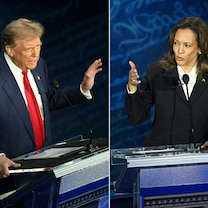Television's Booze Hounds
What TV characters are OD'ing on alcohol?
Sept. 13, 2010— -- Television's depiction of excessive drinking is not a bubbly escapade. Viewers have a ringside seat watching characters battle with the bottle, imbibing until they become incapacitated and worse. Some drinks are served neat. But these characters' embrace of alcohol's dark side is a very messy business. Need a reminder? Flash back to the boozed-out nightmare of "NYPD Blue's" detective Andy Sipowicz (Dennis Franz).
The tradition has continued unabated and more boldly than ever.
From the minute AMC's acclaimed Emmy-award-winning series "Mad Men" debuted, liquor was so prominent in the lives of the show's ad men that it deserved top billing along with the actors. As the show's time frame progressed into the 1960s, series creator Matthew Weiner didn't hold back in depicting a world of liquor-stocked offices, boozy lunches and alcohol-soaked dinners. Some of these debonair characters' intake of spirits has so precipitously escalated in recent episodes – Don Draper (Jon Hamm), Roger Sterling (John Slattery), Herman "Duck" Phillips (Mark Moses) and Betty Draper (January Jones) are the main guzzlers – that the name of the program could well be changed to "Mad for Alcohol."
The trajectory towards hitting bottom has led many viewers to wonder whether some of these key players are thisclose to seeking professional help -- voluntarily or otherwise.
For Draper, recent disruptions in his personal life have played a big role in his nonstop drinking. He drinks to excess during celebratory times – when accepting an industry award – and not so happy ones, as he became distraught over a dear friend's death. Last week, his protegee Peggy Olson (Elisabeth Moss) had to lead him to the men's room, where he vomited profusely.
Draper's problem also fueled the fisticuffs between him and Duck, another problem drinker, who had, in his drunken stage, spitefully tried to leave an excretory deposit on the furniture of a former boss. And Roger Sterling is so irritated over having to put up with the preaching and sob stories of two former booze-imbibing colleagues who've now gone on the wagon that he calls Draper from a bar to come rescue him.
Last night's program took place after Draper had clearly taken some time to reflect and get his act together. The episode opened with his reading an entry from the journal he's been keeping: "They say as soon as you have to cut down on your drinking, you have a drinking problem." One of the goals he set later was "to gain a modicum of control over the way I feel." It was a lesson that the imbiber Betty Draper had to learn as well. Her husband asked her point blank if she was a "wino."Denis Leary of "Rescue Me" on FX.




